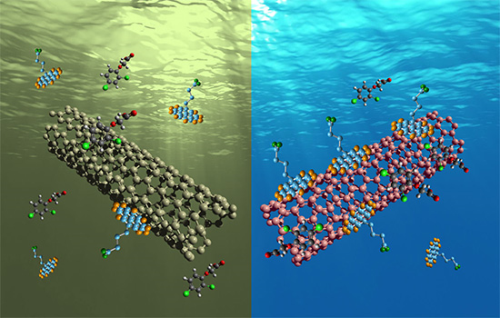
RIT researchers John-David Rocha and Reginald Rogers are developing carbon nanotube technology for removing contaminants for environmental remediation and water filtration for home use.
Carbon nanotubes are storage units measuring about 50,000 times smaller than the width of a human hair. A single-walled carbon nanotube is created when a sheet of graphene is rolled up. The RIT team has developed a method for isolating high-quality, single-walled carbon nanotubes and for sorting them according to their semiconductive or metallic properties. The pure carbon nanotubes were then redistributed into thin papers akin to carbon-copy paper.
“Once the papers are formed, now we have the adsorbent – what we use to pull the contaminants out of water,” reports Rogers, assistant professor of chemical engineering in RIT’s Kate Gleason College of Engineering.
The filtration process works because carbon nanotubes 'dislike water' and only the organic contaminants in the water stick to the nanotube, not the water molecules.
Reuseable
The researchers have also shown that the materials can be regenerated.
“In the future, when your water filter finally gets saturated, put it in the microwave for about 5 minutes and the impurities will get evaporated off,” says Rogers.
The RIT research has been published in the journal Environmental Science: Water Research & Technology.



